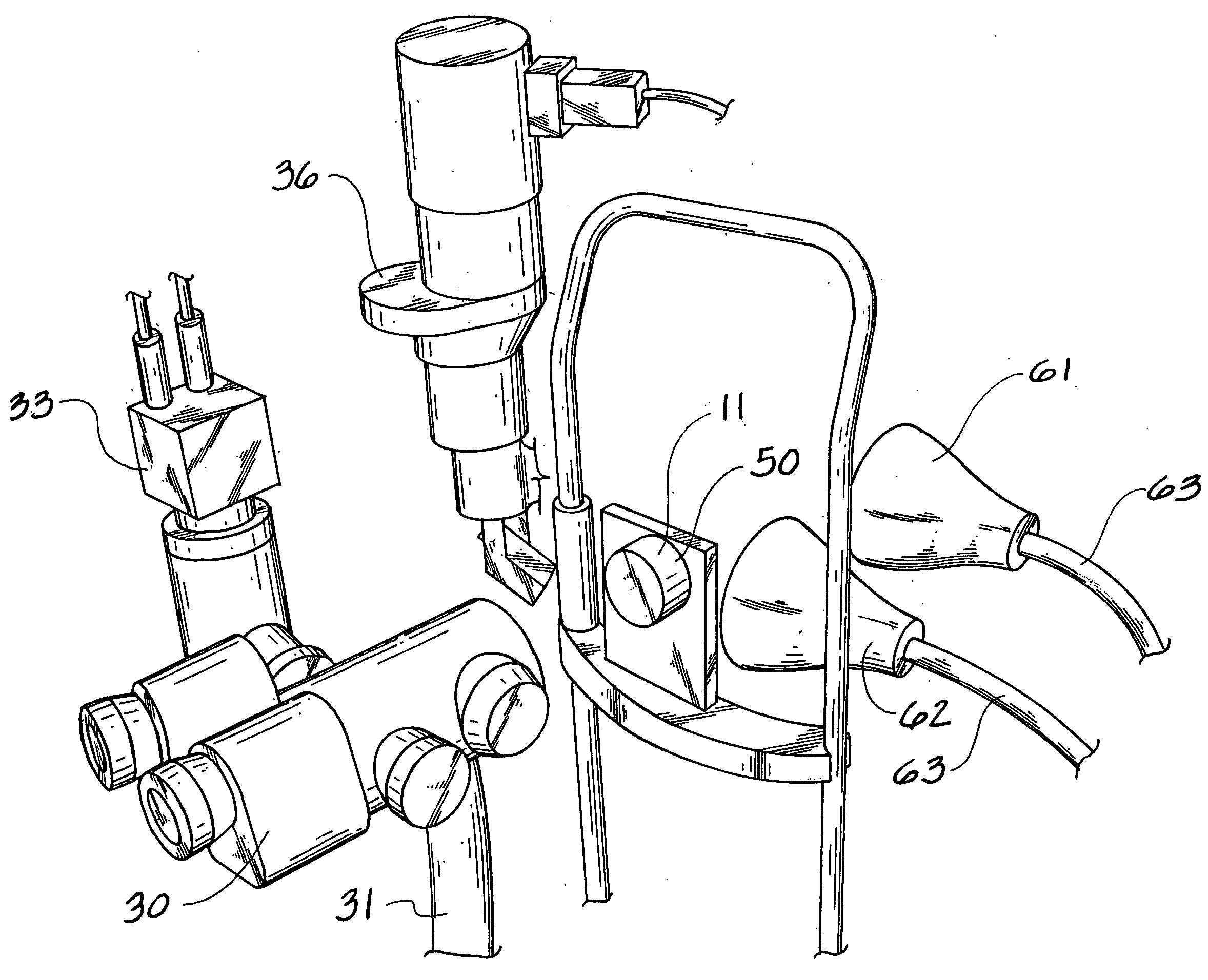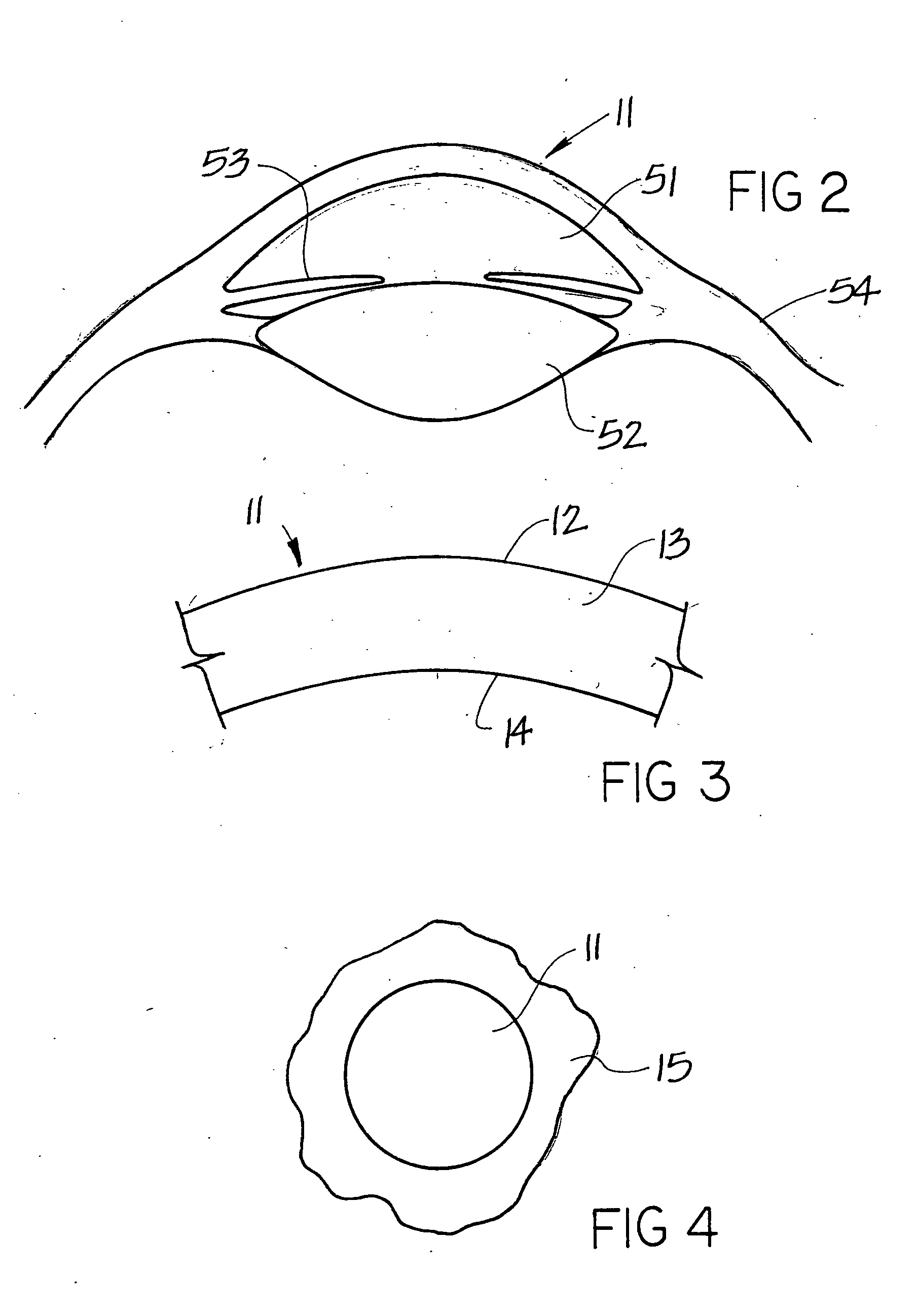Method and apparatus of cornea examination
a corneal and apparatus technology, applied in the field of corneal examination, can solve the problems of affecting the quality of the diffused light method, affecting the accuracy of the evaluator, so as to achieve the effect of increasing the ability of the evaluator and greater accuracy
- Summary
- Abstract
- Description
- Claims
- Application Information
AI Technical Summary
Benefits of technology
Problems solved by technology
Method used
Image
Examples
Embodiment Construction
[0041] Referring now to FIG. 2, the cornea 11 is the transparent part of the external tunic of the eyeball. It is almost circular in shape, and may be slightly broader in the transverse band in the vertical direction. It is convex anteriorly, and projects forward from the sclerotic. The cornea 11 lies on top of an interior chamber 51, and in front of the lens 52 which is covered in part by the iris 53. The sciera 54 surrounds the peripheral edge of the cornea 11. The degree of curvature for each cornea 11 varies from individual to individual, as well as varies within the same individual during different stages of the life span. For example, a cornea 11 will tend to flatten out over time, so that an older person will exhibit a flatter cornea 11 than a younger person typically would.
[0042] Referring now to FIG. 3 The cornea 11 is comprised of multiple layers. Although each layer is technically separated by a membrane, where the membranes may be considered layers themselves, only the ...
PUM
| Property | Measurement | Unit |
|---|---|---|
| distance | aaaaa | aaaaa |
| angles | aaaaa | aaaaa |
| angle | aaaaa | aaaaa |
Abstract
Description
Claims
Application Information
 Login to View More
Login to View More - R&D
- Intellectual Property
- Life Sciences
- Materials
- Tech Scout
- Unparalleled Data Quality
- Higher Quality Content
- 60% Fewer Hallucinations
Browse by: Latest US Patents, China's latest patents, Technical Efficacy Thesaurus, Application Domain, Technology Topic, Popular Technical Reports.
© 2025 PatSnap. All rights reserved.Legal|Privacy policy|Modern Slavery Act Transparency Statement|Sitemap|About US| Contact US: help@patsnap.com



